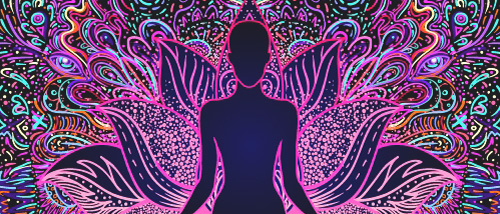
DMT is also known as the spiritual molecule. But what is DMT? Aside from the fact that this psychedelic hard drug is only available in its pure form through the illegal circuit, it is also found in various tree barks, leaves and grasses. Where things get bizarre in this article is that DMT also can be found in our own bodies. For a long time it was thought that this could not be true. Now there is not only scientific evidence for this, but also evidence that more DMT is released at the moment of death than was previously thought.
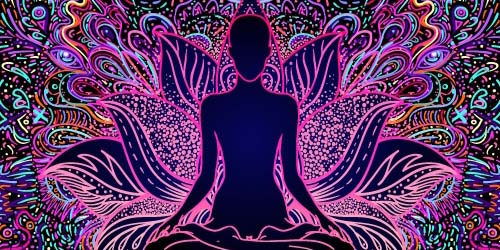
In this article:
- What is DMT?
- Why DMT is prohibited
- The DMT Trip
- Differences and Similarities with LSD and Magic Mushrooms
- DMT in Nature
- DMT in our own bodies?
- Our DMT Herbs
- How to make Ayahuasca?
- Different types of DMT
- The Future of DMT
What is DMT?
What is DMT? DMT is a psychedelic substance that can be found in nature as well as made in the lab. When you read somewhere about DMT, what is being referred to is the substance N,N-Dimethyltryptamine. This is important to mention, since there are more substances in which the abbreviation appears. More on that later. DMT as a drug is smoked in a concentrated crystal form, or powdered and then snorted. Also, DMT is the main ingredient in ayahuasca.
What you need to know about this psychedelic substance is that it is not orally active. That means you can eat DMT without it inducing hallucinations. That's because enzymes in the liver break the substance down at lightning speed [1]. Those enzymes are called Mono Amine Oxidase, or MAO. However, if you take DMT simultaneously with something that inhibits those enzymes, DMT becomes just as active as, say, magic mushrooms or LSD. The substances that help with that are called MAO-inhibitors (MAOi) or MAO-blockers.
In this article we are not only going to tell you more about DMT drugs, but also about the possible role of DMT in our body. You read that correctly; this powerful hallucinogenic substance is produced by our body itself!
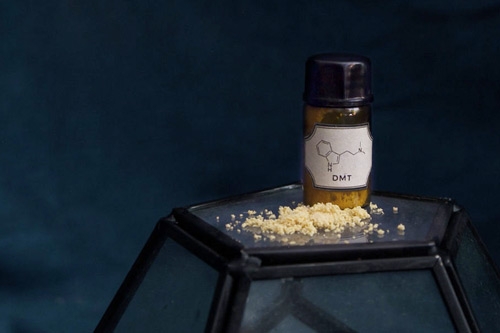
Why DMT is prohibited
In many countries DMT is classified as a hard drug. For example, in the Netherlands, the psychedelic good is listed alongside cocaine, heroin and LSD on List 1 of the Opium Act. The comparison with LSD is accurate, but the comparison with the other two drugs is not. For example, DMT is not physically addictive and is not harmful to the body [2]. This is a similar conclusion drawn from studies of LSD, mescaline and psilocybin from magic mushrooms and magic truffles. As far as is known, these psychedelics have no addictive properties.
Yet we must be careful about calling any drug "non-addictive." If you use DMT or other psychedelics to escape reality, it may well be inviting to use it more often. If you or your family has a history of psychological disorders, it is also very inadvisable to experiment with hallucinogenic substances at home. You also need to know which combination of drugs to be very careful with. For example, lithium, tramadol, cocaine, and Ritalin are extremely dangerous to combine with DMT for various reasons [3].
Although DMT is frequently used in South American countries as a sacrament in religious ceremonies, DMT is probably banned in the West because it takes you out of reality for a period of time. Participation in society is then made more difficult. For how long and what exactly happens during such a trip, we will tell you now.

The DMT Trip
DMT, like other psychedelics, inhibits the functions of the so-called default mode network and the prefrontal cortex. This "brain filter" is normally responsible for analyzing and judging the outside world. If you turn this filter down, you no longer know what is real and what is a fabrication. Total brain activity increases and it also puts repetitive thoughts on a different track. For this reason, psychedelics have medicinal potential in traumatic experiences, addictions and depression [4]. The progress of a DMT trip can happen in two ways; fast and intense by smoking it pure or gradual and long lasting by drinking it through ayahuasca.
Drinking Ayahuasca
20-60 minutes after ingestion you will start to feel weak in the legs, tired and nauseous. You often vomit and sometimes get diarrhea when drinking ayahuasca. Shortly afterwards it becomes an emotional rollercoaster of visual effects. Patterns appear on walls, floors and ceilings. With your eyes closed, these patterns often become three-dimensional. Depending on the dosage, you can get real hallucinations, in which you can casually come into contact with deceased relatives, aliens and creatures like machine elves or leery dwarves. You can perceive completely new worlds and dimensions and time does not seem to exist. You can taste colors and see sounds; a phenomenon called synesthesia. You may also experience the sensation of stepping out of your body. In the most extreme cases your ego can dissolve and you feel one with the universe. An ayahuasca trip usually lasts between 5 and 10 hours.
»Read more about Ayahuasca here.
Smoking DMT
You can smoke DMT with a special DMT pipe. It is not exactly easy. First of all you have to go through the illegal circuit to get the substance, which in itself is dangerous. DMT is very concentrated, so it can be difficult to weigh the dosage. Then smoking DMT is difficult, because the smoke is bad and has a chemical taste, and you have to take it in one long gulp. Then you hold your breath and let the smoke do its work.
Phase 1: The Breakthrough
The DMT trip often begins with a strong sense of breaking through reality. Perceptions of color and sharpness increase dramatically in a very short time. Then come the geometric patterns that fill up your surroundings at a rapid pace. In no time it is as if you are in a kaleidoscope; patterns everywhere. You may also hear whistling sounds, crackling or whooshing. Then it feels as if you are popping through the some kind of veil or membrane; as if you are being shot by a cannon.
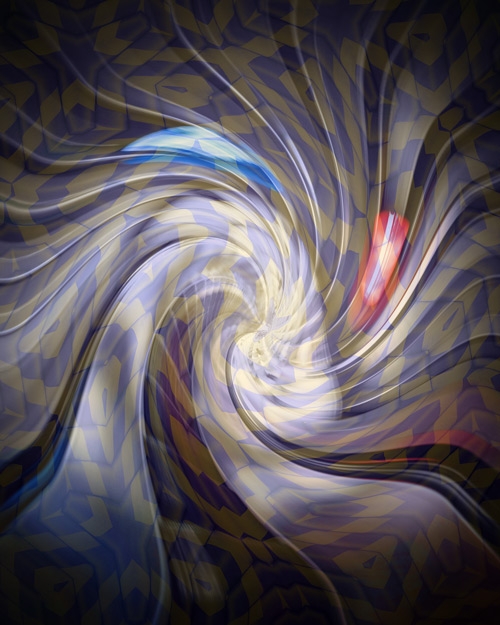
Phase 2: The Waiting Room
Did you indeed achieve the breakthrough? Then you end up in "the waiting room." If you've ever watched Star Trek, it looks like you're traveling through space at warp speed, but instead of stars shooting by, users often see a tunnel of rapidly changing shapes and patterns. It feels a bit like a loading screen for the next stage.
Phase 3: The Other Side
After the waiting room, you get the feeling of arriving in another dimension. Here, strange entities walk and fly around in a landscape that would be totally unrecognizable. Many experience a transcendental feeling of perfection and unity with the universe.
Phase 4: Sinking down
It feels like you are being pulled back to reality by an unseen force. The other dimension fades and slowly the geometric patterns diminish until finally you see nothing but the environment you left from.
A DMT trip usually lasts about 20 minutes. You may feel high for an hour afterward.
DMT vs. Ayahuasca
By smoking DMT, you bypass the enzymes that normally break down DMT and the effect occurs much faster. Immediately after inhalation or at the latest within 40 seconds, the trip begins. The effects themselves are almost identical to those of ayahuasca. How intense the trip is, depends to a large extent on the dose, the set and the setting. Unlike ayahuasca, pure DMT rarely makes you nauseous. The duration of the trip is also considerably shorter. After 20 minutes you are usually out again [5]. In theory you could do it during your lunch break and go back to work after your break. However, it is not that simple, as the images and also the lessons DMT gives you can be very profound. For that reason, DMT as well as ayahuasca and other psychedelics require a period of integration. You then take time for yourself to work with what you experienced during the trip. Integration is very important in both ceremonial and clinical settings.
Differences and Similarities with LSD and Magic Mushrooms
There are plenty of internet forums where people share their experiences. If you look at these experiences objectively, you see that the similarities between all classic psychedelics are great. A trip on DMT or ayahuasca is very similar to an experience with magic mushrooms, LSD and cacti like peyote and san pedro. All interfere with your senses, induce hallucinations and have spiritual qualities.
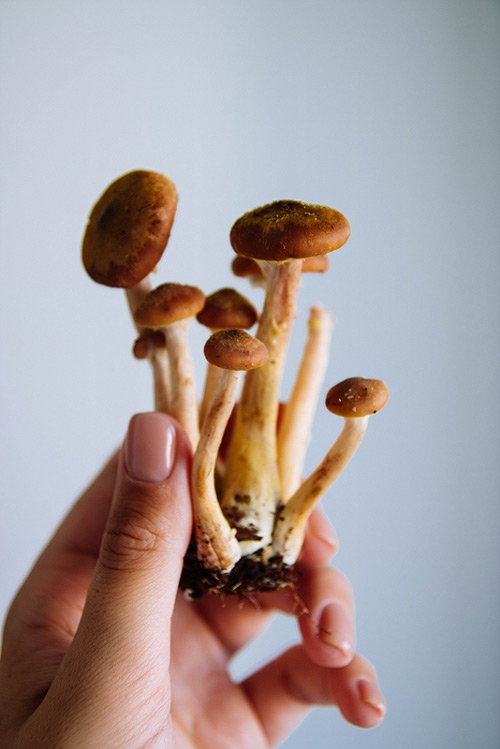
Besides the fact that DMT itself is not orally active and the other psychedelics are, the difference is the duration of the trip and in the subjective perception. One theory is that your perception during a trip is primarily driven by the setting. You can imagine that a trip in the South American jungle feels different than a trip on the couch at home.
DMT in Nature
DMT was first synthesized in 1931 by German chemist Richard Helmuth Fredrick Manske [6]. In 1946, an alkaloid was also identified in the bark of the plant jurema preta (Mimosa tenuiflora). This substance was named de Lima nigerina by the Brazilian discoverer Oswaldo Gonçalves and had suspicious similarities to DMT [7]. This was confirmed in 1959 by a pair of American chemists: DMT can also be found in nature [8]!
And a lot of it, too. Since then, DMT has been discovered in at least 50 different species of plants that are part of 10 different plant families. DMT has also been found in at least four animal species. The most sensational research shows that DMT is also produced in the human body [9].
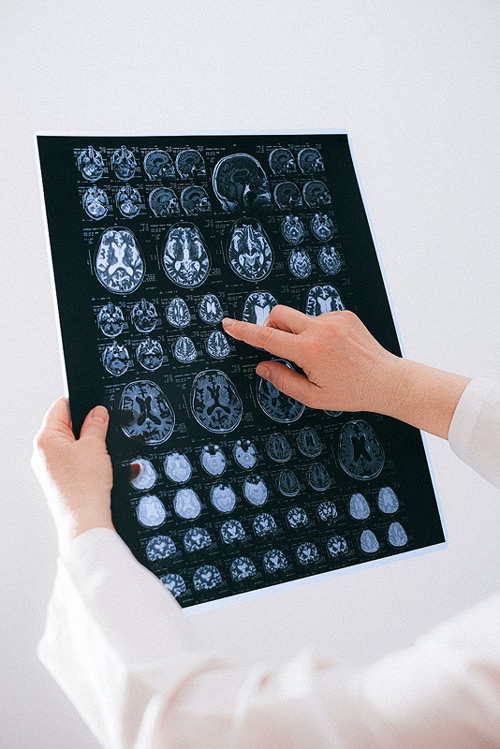
DMT in our own body?
It is difficult to measure DMT in the body. This is why we focus on two enzymes that produce DMT together. INMT and AADC make DMT together [9]. It is believed that DMT is not only found in many places in the body, but it can also accumulate [10]. For example, it has been shown that you can find DMT in:
- The lungs
- The adrenal glands
- The pineal gland (a tiny section in the brain)
- Urine (up to 19 nanograms per milliliter)
- The blood (up to 55 nanograms per milliliter)
- Cerebrospinal fluid (up to 100 nanograms per milliliter)
However, what DMT does in our bodies is not entirely clear or sufficiently researched. Dr. Rick Strassman hypothesized in his controversial book DMT: The Spirit Molecule that the pineal gland would produce large amounts of DMT at birth and during death. DMT would therefore explain the mystical effects people observe during near-death experiences. However, in 2018, David E. Nichols stated that the amount of DMT secreted by the pineal gland is too low to be able to trip from it [11].
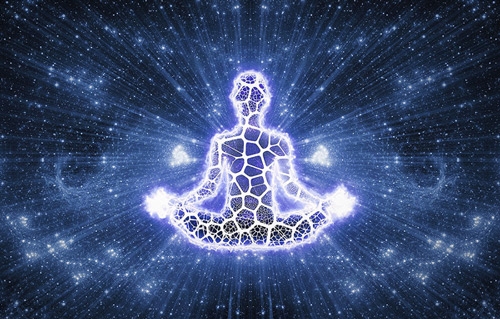
In 2019, a new research study was released on the production of DMT in the brains of rats; animals that are physiologically very similar to humans. In this study, scientists led by Dr. Jon Dean show three remarkable results:
- The concentration of DMT in the brain is higher than was previously thought; similar to the normal amount of serotonin*.
- The two enzymes that produce DMT both appear in the same nerve cell. This means that this is the last step to definitively conclude that DMT is produced in the brain.
- In rats undergoing cardiac arrest, suddenly up to 600% more DMT is observed in the visual parts of the brain.
* serotonin is a neurotransmitter that is involved in our mood, emotions, musculoskeletal system and digestion, among other things.
How to make Ayahuasca?
Ayahuasca is a herbal drink made from plants containing DMT and plant parts naturally high in MAO inhibitors. Chacruna and Caapi are often the main ingredients of . According to Dutch law it is not allowed to make ayahuasca yourself. And although you can find the information all over the web, we are not allowed to tell you what the correct proportions are. Be careful with what you read on the internet. Someone's opinion is not necessarily the truth.
Different types of DMT
There are several types of DMT found in nature. Below you will find a brief overview with the alleged effects and the sources of these substances.
N,N-DMT
N,N-Dimethyltryptamine is the most commonly found variant. You can find it in the bark of some acacia trees like Acacia confusa, Diplopterys cabrerana (Chaliponga) and in Psychotria viridis (Chacruna). When DMT is written somewhere, nine times out of 10 it refers to this substance. This is also the substance that is found in the body.
5-MeO-DMT
If N, N-DMT shows you a rainbow of colors, then 5-MeO shows you pure white light. This comparison is often made on internet forums, because sometimes you seem to be sitting in a room of pure white light. Therefore, 5-MeO can cause anxiety if you are used to N, N-DMT, LSD or psilocybin. The full name of the substance is 5-methoxy-DMT and it occurs in plants, but also in the skin of the toad Bufo alvarius. It secretes this substance through glands in the toad skin [12]. So with “licking toads” you are going to trip on 5-MeO-DMT. Red virola, canary grass and the velvet bean (mucuna pruriens) contain 5-MeO-DMT in addition to N, N-DMT.
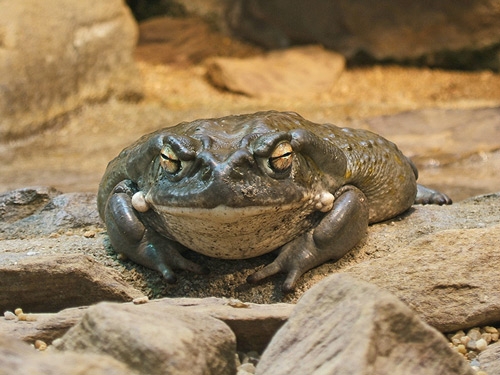
Bufo alvarius - Foto: I Wildfeuer, CC BY-SA 3.0
Bufotenine (5-HO-DMT)
Often confused with 5-MeO-DMT. Bufotenin is one of the first tryptamines to be isolated by chemists. The seeds of the cebil or vilca (Anadenanthera colubrina) and yopo (Anadenanthera peregrina) contain bufotenin, among other things [13]. Unfortunately, we cannot tell you much about the differences with the well-known DMT. There are even opinions that the bufotenin is not even psychedelic. Scientist Jonathan Ott thinks otherwise. He took himself as a test subject for his many years of experiments. He took the ground seeds of the Anadenanthera family orally, nasally, and even rectally ... It turns out that there are indeed similarities with both 5-Meo and N, N-DMT.
Psilocybin (4-PO-DMT)
This is the substance that gives magic mushrooms and magic truffles their psychedelic effects. As you can see, psilocybin has then been given a different name, but this substance is very similar to N,N-DMT in both effect and molecular structure.
Changa
Changa is a collective term for smokeable herbs that contain both DMT and an MAO inhibitor. This extends the duration of the DMT trip. Changa or Xanga is in fact smokeable ayahuasca.
The future of DMT
In summary, research on DMT is actually still at an early stage. Especially the role of natural DMT in the human body is not well understood. It is precisely in this area that a wealth of information about the way the human brain works, the perception of reality, and what happens to our perceptions when we die, potentially lies. There is also evidence that doing certain breathing exercises like the Wim Hof Method and holotropic breathwork can release DMT. As more and more research into psychedelics is done for medicinal purposes, it is perhaps even more important to explore what this spiritual molecule can do without us having to take drugs. We end this article with a documentary that happened to be posted on YouTube while we were writing this article:
Sources:
- [1] McKenna DJ, Towers GHN, Abbott F. Monoamine oxidase inhibitors in South American hallucinogenic plants: Tryptamine and B-carboline constituents of ayahuasca. Journal of Ethnopharmacology. >1984;10:195-223. doi:10.1016/0378-8741(84)90003-5
- [2] Strassman, R. J.; Qualls, C. R.; Uhlenhuth, E. H.; Kellner, R. (1994). "Dose-response study of N,N-dimethyltryptamine in humans. II. Subjective effects and preliminary results of a new rating scale" (PDF). Archives of General Psychiatry. 51 (2): 98–108. doi:10.1001/archpsyc.1994.03950020022002. eISSN 1538-3636. ISSN 2168-622X. PMID 8297217
- [3] PsychonautWiki; Tripsit DMT combineren
- [4] Center for Psychedelic & Consciousness Research
- [5] Bigwood J.; Ott J. (1977). "DMT: the fifteen minute trip". Head. 2 (4): 56–61. Archived from the original on January 27, 2006. Retrieved November 28, 2010.
- [6] Manske R. H. F. (1931). "A synthesis of the methyltryptamines and some derivatives". Canadian Journal of Research. 5 (5): 592–600. doi:10.1139/cjr31-097. ISSN 0366-6581.
- [7] Ott, Jonathan (1996). Pharmacotheon: Entheogenic Drugs, Their Plant Sources and History (2nd, densified ed.). Kennewick, WA: Natural Products. ISBN 978-0-9614234-9-0.
- [8] Pachter I. J.; Zacharias D. E.; Ribeiro O. (1959). "Indole alkaloids of Acer saccharinum (the silver maple), Dictyoloma incanescens, Piptadenia colubrina, and Mimosa hostilis". The Journal of Organic Chemistry. 24 (9): 1285–87. doi:10.1021/jo01091a032. eISSN 1520-6904. ISSN 0022-3263.
- [9] Theresa M. Carbonaro and Michael B. Gatch (2016) Neuropharmacology of N,N-Dimethyltryptamine. doi: 10.1016/j.brainresbull.2016.04.016
- [10] Frecska E, Szabo A, Winkelman MJ, Luna LE, McKenna DJ. A possible sigma-1 receptor mediated role of dimethyltryptamine in tissue protection, regeneration, and immunity. J Neural Transm. 2013;120:1295–1303.
- [11] Nichols, David E. (2018). "N,N-dimethyltryptamine and the pineal gland: Separating fact from myth". Journal of Psychopharmacology. doi:10.1177/0269881117736919. eISSN 1461-7285. ISSN 0269-8811. OCLC 19962867. PMID 29095071.
- [12] Morris, H. "The Psychedelic Toad". Hamilton's Pharmacopeia. 28 nov. 2017.ViceTV.
- [13] Morris, H. "Bufotenine: In Search of Hataj". Hamilton's Pharmacopeia. 1 feb. 2021. ViceTV.
- [14] Jellinek "Wat is DMT?" apr. 2020 jellinek.nl/vraag-antwoord/wat-is-dmt